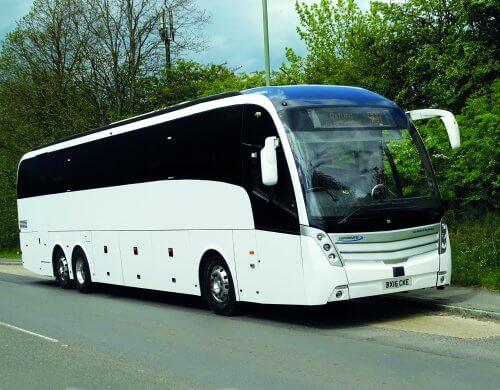
Continuing our series looking at used PSVAR coach options, Richard Sharman considers the options for buyers looking for a Caetano Levante.
Love them or hate them, the Caetano Levante is one of the most common sights on the UK motorway network, thanks to its use on National Express diagrams. However, as newer coaches are introduced onto the network, coaches are returned off-lease and sold on to a growing number of coach operators.
Ticking all the boxes
The Caetano Levante has a lot going for it, and when the rush for Public Service Vehicle Accessibility Regulations (PSVAR)-compliant vehicles started there was an immediate surge of operators looking to purchase one. In many cases, the prices of high mileage examples doubled overnight due to the demand.
The reason for that demand is that this is a coach that ticks all the boxes: LED destination displays, wheelchair lift at the front of the coach rather than in the side, well-specified and comfortable interior and styling that has remained consistent between the first incarnation and the second. That means that an early 56-plate example with a decent paint job can still look just as modern as a 19-plate example. This has huge benefits for coach operators who want a modern looking fleet.
By subscribing you will benefit from:
- Operator & Supplier Profiles
- Face-to-Face Interviews
- Lastest News
- Test Drives and Reviews
- Legal Updates
- Route Focus
- Industry Insider Opinions
- Passenger Perspective
- Vehicle Launches
- and much more!


